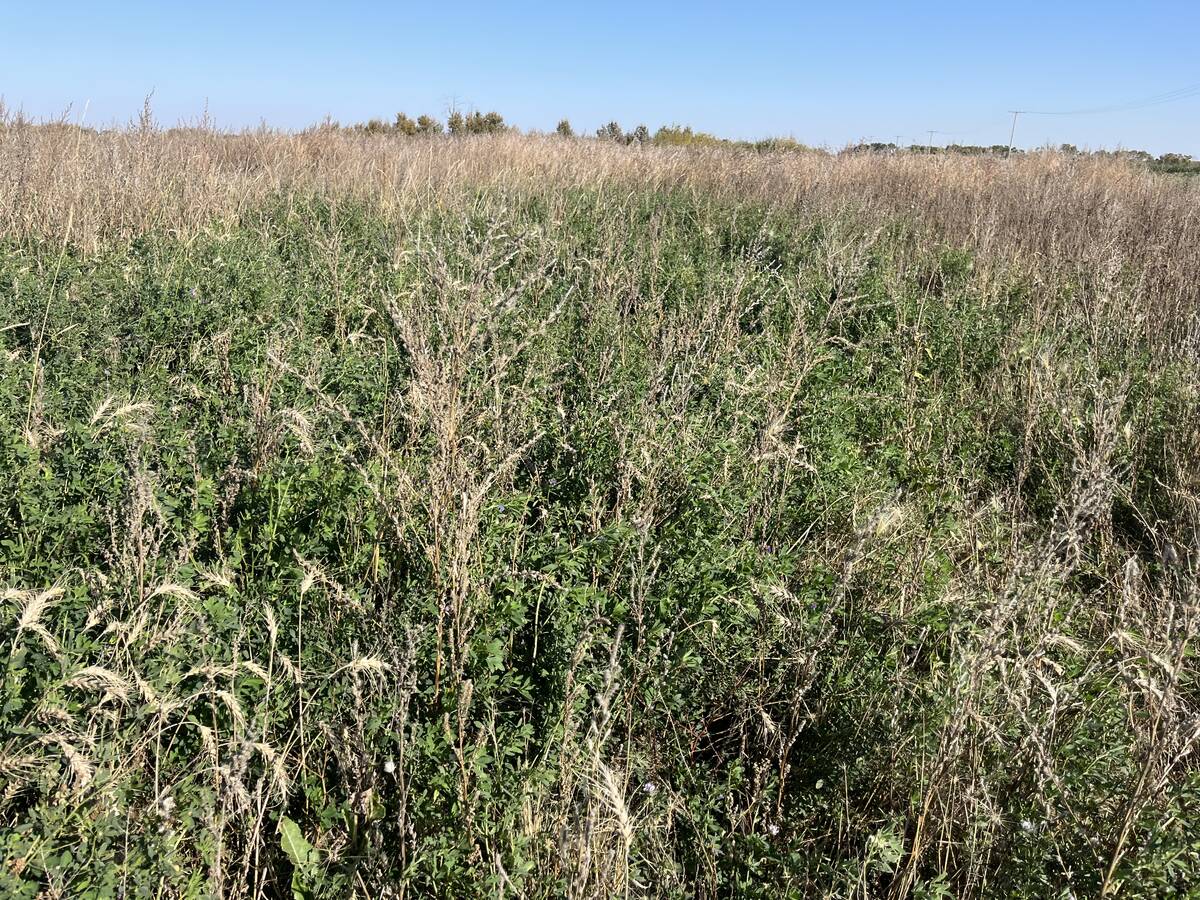QUEBEC CITY – Canada must strengthen its scrapie surveillance program if it hopes to regain export markets, says the president of the Canadian Sheep Federation.
“We have to change our scrapie program to regain world markets because of the changing scope of world reaction to TSEs (transmissible spongiform encephalopathies),” Randy Eros said, adding that Canada does not have proper surveillance to show the disease’s prevalence in this country.
He said the Americans have a better surveillance program that includes checking the brains of dead, dying, diseased and fallen stock.
Read Also

Dormant seeding forages frees up farmer time and gets ahead of weeds
Dormant seeding isn’t common practice and can appear daunting, but there are some techniques to give Manitoba farmers an edge
“We are going to have to have that if we are going to have equivalence with the United States,” he said.
According to Canadian Food Inspection Agency figures, Canada had 12 infected flocks in 2003, down considerably from a peak of 31 flocks in 1998, mostly in Quebec.
Sheep producers are working with the CFIA to develop a new voluntary certification program to be launched later this year.
It includes testing animals for genetic resistance, more surveillance and increased certification of clean flocks.
Penny Greenwood, a senior CFIA veterinarian, said part of the new scheme involves evaluating the genetic susceptibility found in some sheep to this neurological disease.
“When they find an infected flock in the future, a Canadian producer will be given a one-time choice,” Greenwood told the World Sheep Congress in Quebec City on July 19.
“He’ll have a choice between total depopulation or to work with us with our genetic approach.”
The Ontario Sheep Marketing Agency is administering the program, which is open to farms across Canada.
While the plan also advocates removing the disease through selective breeding, the CFIA does not plan to mandate that the Canadian flock be bred for scrapie resistance.
Greenwood said government and industry officials were reluctant to adopt a genetic approach because of unanswered questions about the disease and its transmission. The new approach requires detective work but could eliminate wide-scale slaughter of healthy animals.
Canada and the U.S. plan to concentrate on the 171 and 136 sites on the sheep DNA code.
Under the new program, producers must keep detailed records and all animals must be individually identified. They must arrange for a private veterinarian to deliver the program and must report any illness to the vet in a sheep or goat older than 12 months that lasts longer than two weeks.
The animals will be monitored and records must be kept for five years after the animal leaves the flock or has died.
Anyone wishing to test rams for genetic resistance to scrapie must use two separate laboratories, one of which must be CFIA approved for genotyping.
A brain sample from all sheep or goats older than 12 months that die on the farm must be submitted for scrapie testing at an approved lab.















